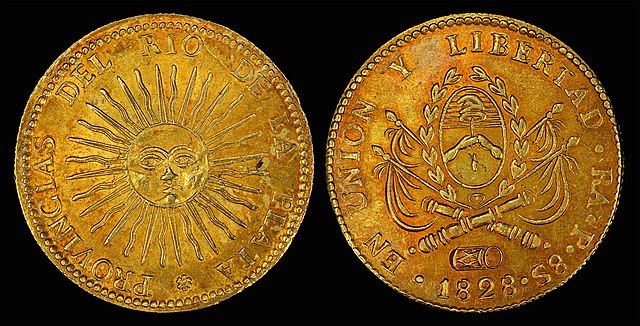Coat of arms of Argentina
The coat of arms of the Argentine Republic or Argentine shield was established in its current form in 1944 but has its origins in the seal of the General Constituent Assembly of 1813. It is supposed that it was chosen quickly because of the existence of a decree signed on February 22 sealed with the symbol. The first mention of it in a public document dates to March 12 of that same year, in which it is stated that the seal had to be used by the executive power, that is, the second triumvirate. On April 13 the National Assembly coined the new silver and gold coins, each with the seal of the assembly on the reverse, and on April 27 the coat of arms became a national emblem. Although the coat of arms is not currently shown on flags, the Buenos Aires-born military leader Manuel Belgrano ordered to paint it over the flag he gave to the city of San Salvador de Jujuy, and during the Argentine War of Independence most flags had the coat of arms.

Seal of a French group in the National Assembly, around 1793.
Coat of Arms of the General Constituent Assembly of Argentina depicted on the eight escudo gold coin.
The Phrygian cap or liberty cap is a soft conical cap with the apex bent over, associated in antiquity with several peoples in Eastern Europe and Anatolia, including the Persians, the Medes and the Scythians, as well as in the Balkans, Dacia, Thrace and in Phrygia, where the name originated. The oldest depiction of the Phrygian cap is from Persepolis in Iran.
Dacian prisoner with Phrygian cap (Roman statue from the 2nd century)
A Parthian (right) wearing a Phrygian cap; detail from the Arch of Septimius Severus, Rome (203 AD).
Orpheus with Phrygian cap.
Dacian sculpture with Phrygian Cap.






